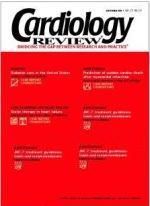Sympathetic tone in hypertensive patients with LVH
It is a long-held belief that essential hypertension is in some way related to sympathetic tone. This assumption does not necessarily mean that all individuals with essential hy-pertension have increased sympathetic tone; some might and others might not.
The relationship between sym-pathetic tone and hypertension is difficult to study because most measures of sympathetic tone are highly variable, and many measures do not adequately reflect true generalized sympathetic tone. Another problem is that even with accurate measurements, hypertension is likely characterized by an increased tone in some regions, such as the heart and renal areas, but perhaps not in overall sympathetic tone. Thus, measurement of generalized sympathetic tone may be inadequate in understanding the link between sympathetic tone and essential hypertension.
The study by Schlaich and Lambert (page 31) takes advantage of methodologies that measure regional sympathetic tone to document differences in cardiac sympathetic tone between hypertensive subjects with and without left ventricular hypertrophy (LVH). There was no significant difference in renal sympathetic tone, but given the trend in the same direction and the small number of subjects, such an association was not ruled out. In contrast, measures of generalized sympathetic tone did not show these associations. The authors conclude that sympathetic tone may be an important mediator of the development of LVH.
A caveat in interpreting the study findings is that casual rather than ambulatory blood pressure was measured. Thus, it is possible that subjects with LVH were actually more severely hypertensive than subjects without it. Arguing against this are the striking differences in sympathetic tone and the similar clinic blood pressure levels.
One is left with the question of the origin of the increased sympathetic tone in subjects with LVH. The answer remains unclear. Although studies of genetic polymorphisms propose a few possibilities, a genetic basis has not been proven. Psychological factors are another candidate, although still unproven.
Inhibitors of angiotensin II, including the angiotensin-converting enzyme inhibitors and the angiotensin receptor blockers, are effective in reversing LVH.1 If, as suggested in the article by Schlaich and Lambert, sympathetic tone contributes to the development of LVH, then inhibition of sympathetic tone would seem to be another means by which it could be reversed. Yet studies to date find beta blocking agents to be among the least effective antihypertensive agents in reversing LVH.1 This discrepancy could be explained by the often overlooked evidence that blood pressure reactivity to sympathetic stimulation is not reduced by beta blocker monotherapy or by alpha blocker monotherapy, but by the combination of the two.2 The study findings suggest that this combination, already in use in the treatment of elevated sympathetic tone associated with congestive heart failure with carvedilol, may merit study in the management of hypertensive patients with LVH.
Finally, we must recognize that the methods of this study clearly are not amenable to clinical use. Nevertheless, the findings do offer intriguing evidence that angiotensin II is not the only story in the pathogenesis of LVH.
